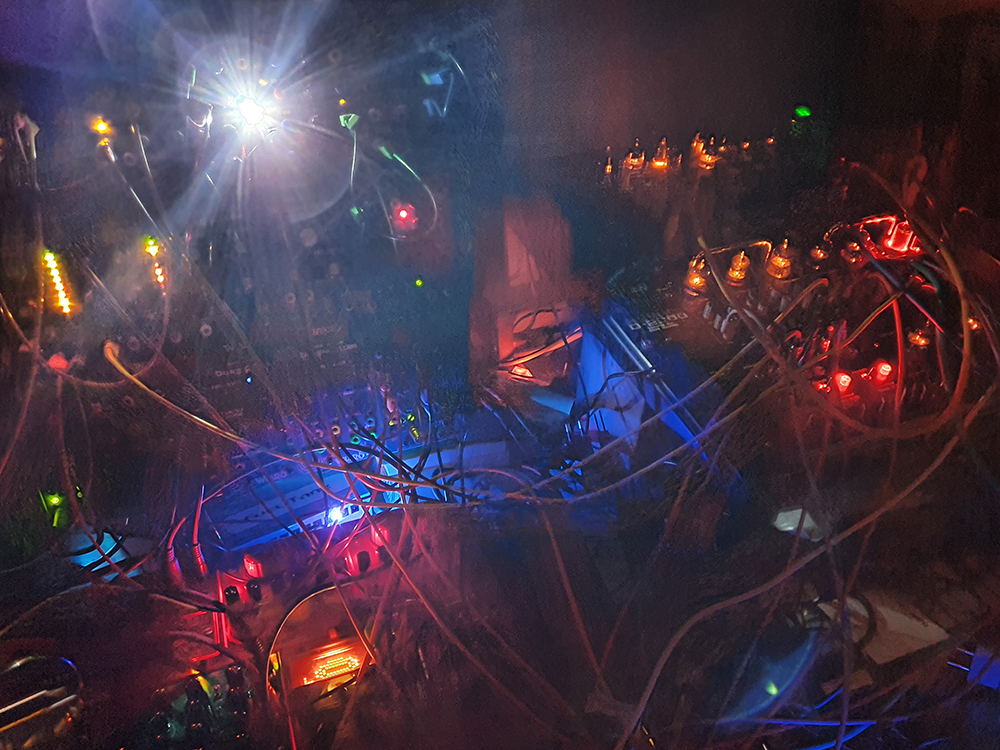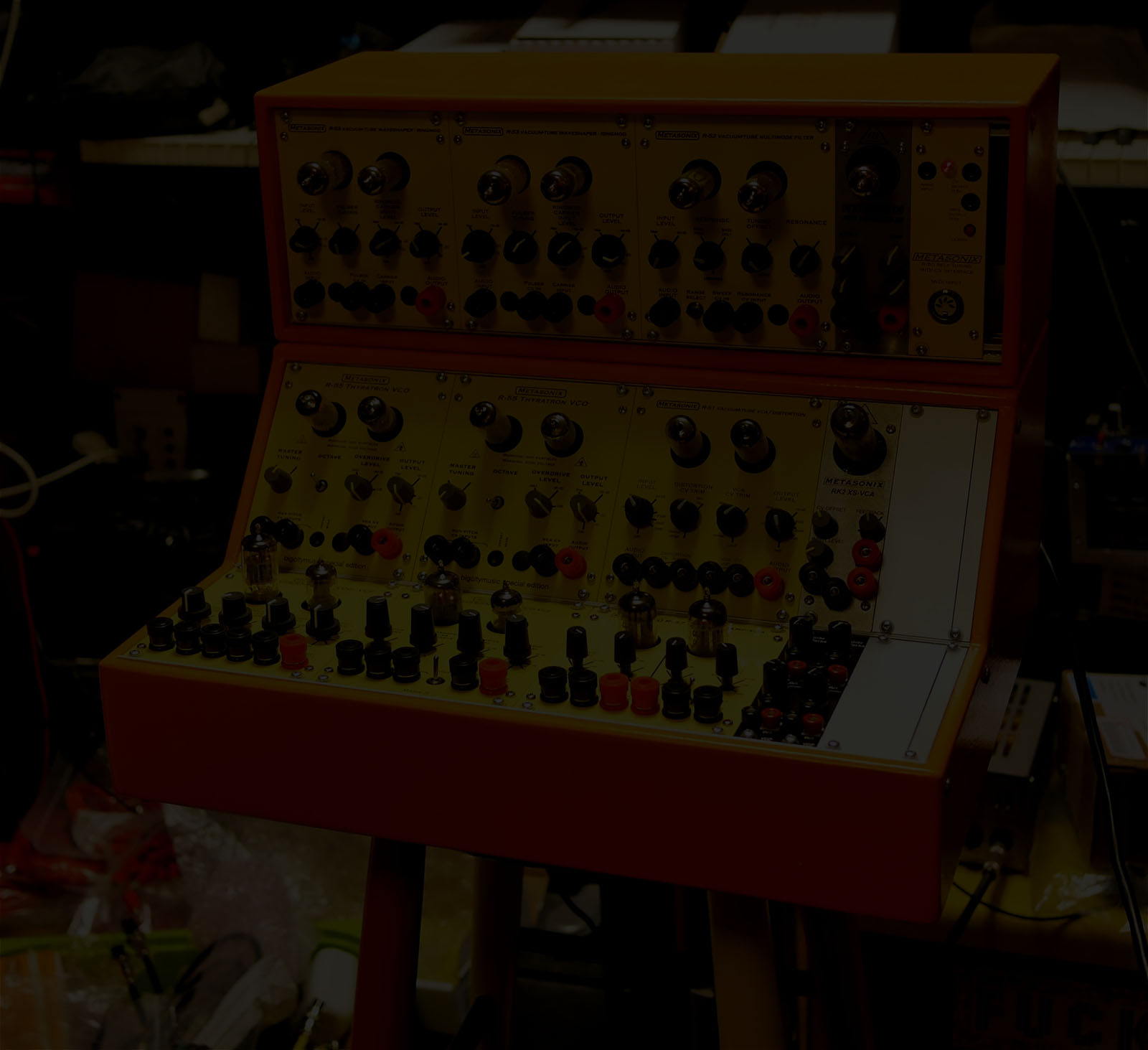
Sonixtualized is bursting out as a companion to my fourth choice in our ITATIOM series dealing with Inventors Talking About Their Instruments Or Modules. Once again a mammoth of a selection offering more than 4 hours of music made using modules or systems manufactured by Metasonix, whose particularity is to use tubes which behave like nothing I’ve encountered. No doubt that those who want to stay out of their comfort zone and accept that unpredictability can be a good thing will love such flavor so for now let’s think inside the tube.
01. Catsynth – Tantsn (02:27)
Amanda Chaudhary is a composer, bandleader, electronic musician, jazz keyboardist, and visual/sound artist. She is also creator of the popular video channel CatSynth TV, where she discusses synthesizers, music, and a variety of other cultural topics.
I have long found the Metasonix modules a fertile ground for exploration, dancing around the edge of a resonance, or tuning just to the point of instability and then leaping into chaos. For this piece, I wanted to see how far I could go with melody and rhythm in addition to the noise qualities most often associated with these unique instruments. I limited myself to my three Metasonix modules, the R-45 Supermodule VCO/VCF, R-53 Waveshaper/Ringmod, and RK5 Dual Low-pass Gate, plus a keyboard, envelope and LFO. The end result is a playful little dance – “tantsn” is Yiddish for dance – with a 15/8 rhythmic pattern and a haunting, slightly broken melody that melts and boils into a colorful final crescendo.
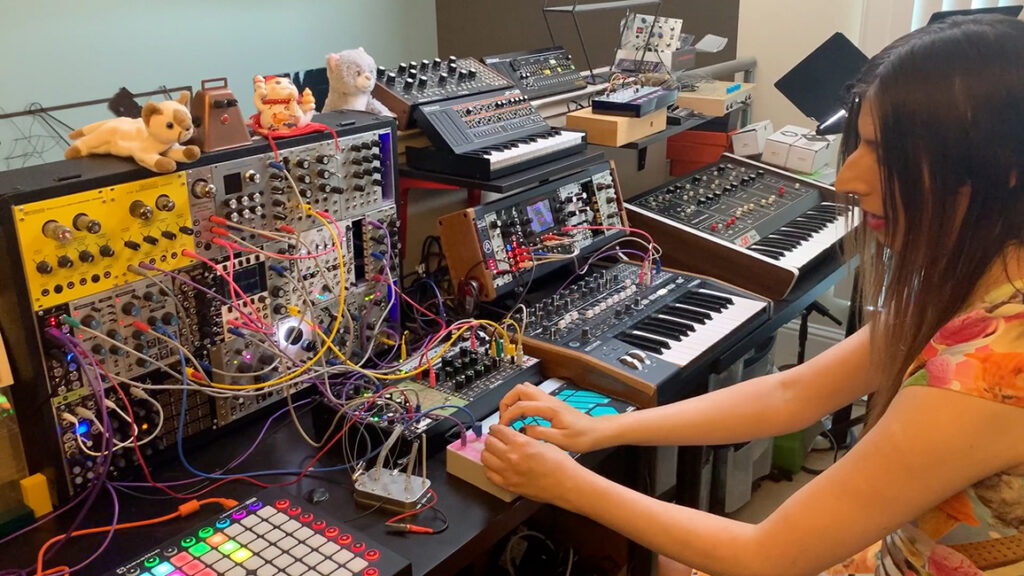
02. Philippe Petit – Turn On The Microwave & Defrost The World ! (11:16)
It feels strange to write about me so allow me to direct you to my website:
http://www.philippepetit.info
I had been lurking over Metasonix for quite some time, attracted by the mystery of the tubes, looking so promising… Wondering how they may sound I was thrilled to discover the « Triple Sublime Assheater » module which Ric Barbour adapted to the Buchla format. RK2 VCA + RK3 Grinder + RK4 Filter together to change the traditional Buchla sound and listen outside the box…
Recreating the danger of electrical power, feeling the electricity right under my hands…
BEWARE Electronic hazard !!!
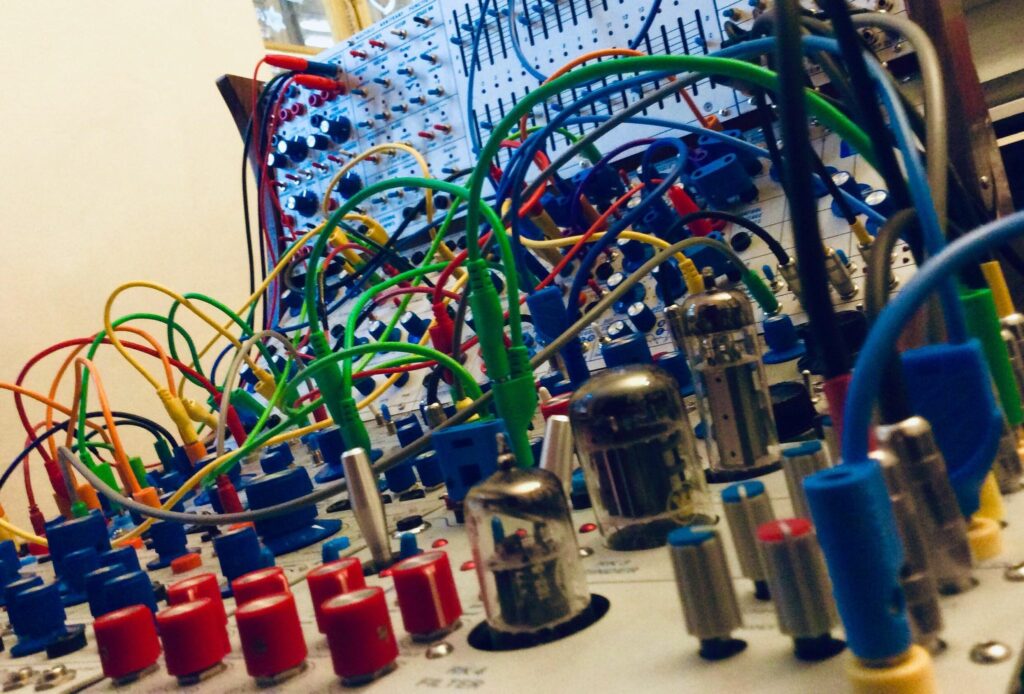
03. Weinglas – Isolation Madness (03:40)
Weinglas is an European sound and noise artist from Germany.
Weinglas’s music takes listeners on a dark journey into the subconscious. Modular synthesizers are used by the musician alongside extraordinary effect and sound generators (no computers!) that use vacuum tubes and springs.
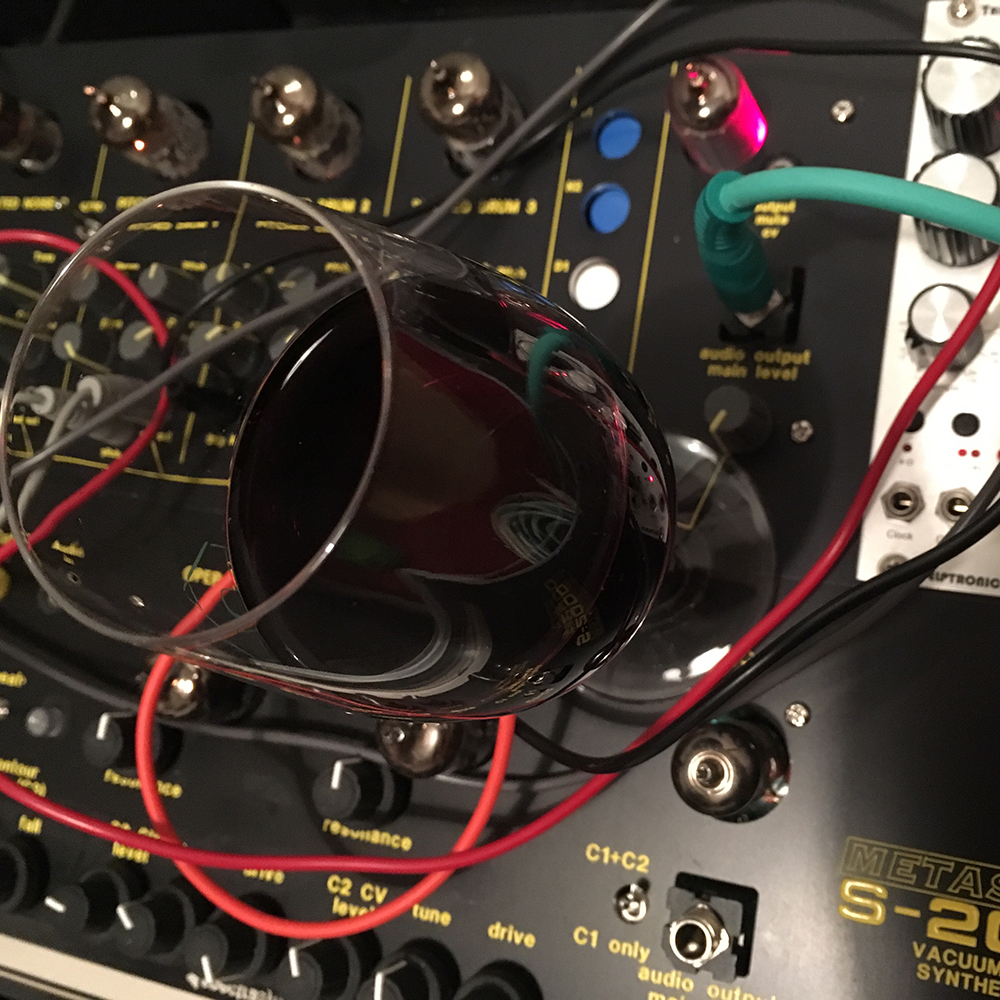
04. Fa Cesario – Borgz Tubez (05:52)
Since the end of the 90s Fa Césario has been exploring the fields of noise / poetry and improvised music playing about a hundred concerts per year, building for each concert an instrument or a different system (set open system) though he paid very little attention to the recording of his music favoring the live aspect. Fa is particularly interested in the sensitive aspect often absent from electronic productions. He likes to explore the limits of his instrument, push further its possibilities / ratio of resistance and to a way of including the error as the engine of his musical possibilities :
In the early 2000s my music was extremely brutal, i was known to empty rooms and burn sound systems, which happened at a big festival in paris … Right after me Kawabata Makoto who was to play, he was laughing a lot but 500 people left the room and waited for a complete sound system to be installed so that the concerts could resume.
A few years later it is with John Rodrik that we modified my first d1000, entered sync, precision potentiometer 50 turn on the resonance and entered cv and roll modified (cv + potentiometer), the sound could also now go up to cosmic crystal subjected to an electric voltage which seems not to be of this world !, I never heard sounds like these again (because I had to sell this primal jewel).
on the tracks I first made the choice to pass all my modules and tr 727 in an i cunt and an F2 integrated in eurorack, on the second tracks “meta speaxxx” it is a sound and cv feedback system that produce all the scream and synth lines.
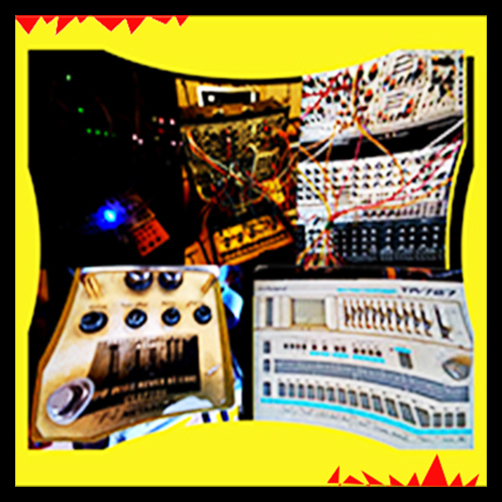
05. Gino Robair – Triptyque Thyratron (12:00)
Voice: Myriam Doumi
Text: Arthur Rimbaud
Gino Robair chose to use Unpopular Electronics as a moniker… From time to time… He has played percussion nearly his entire life and began working with tape music and synths while in high school. As a composer, he has written concert works and music for television, radio, silent film, theater and dance. His opera, “I, Norton,” is about a man who declared himself Emperor of the U.S. in the 19th century. As a drummer/percussionist, he recorded albums with Tom Waits, Anthony Braxton, John Butcher, Derek Bailey, Otomo Yoshihide, Fred Frith and the ROVA Saxophone Quartet; and performed with Nina Hagen, John Zorn, Thurston Moore, the Thinking Fellers Union Local 282 and Wadada Leo Smith. He is also a founding member of the Splatter Trio and Pink Mountain. With the Club Foot Orchestra, he accompanies classic silent films. Currently, he plays in the trio Tender Buttons with Tom Djll and Tania Chen. His solo project, Unpopular Electronics, often includes Tom Djll as a special guest.
I listen for the unpredictable when working with a synth. I want to be surprised and have a conversation with whatever configuration of electronics I have in front of me. If the machine gets a bit stroppy and fights back, all the better. But rather than use sequencers or a keyboard, I prefer to drive a synth with sources of uncertainty, perhaps with some CV feedback for good measure. This approach works especially well with the S-1000, as its tube-based design provides a rich source of indeterminate interaction and attitude.
In the first section of this piece, the rhythmic material is generated using a Frap Tools Sapel to play and modulate a pair of Future Retro Transient modules, in addition to the S-1000.
In the second section, the Sapel helps shape the S-1000’s timbre over a rhythmic part played on plastic containers.
In the final section, I overdubbed several drones while exploring the subtleties of the S-1000’s filter resonance.
“Our writing tools are also working on our thoughts.” —Nietzsche, in a letter to Peter Gast, 1882
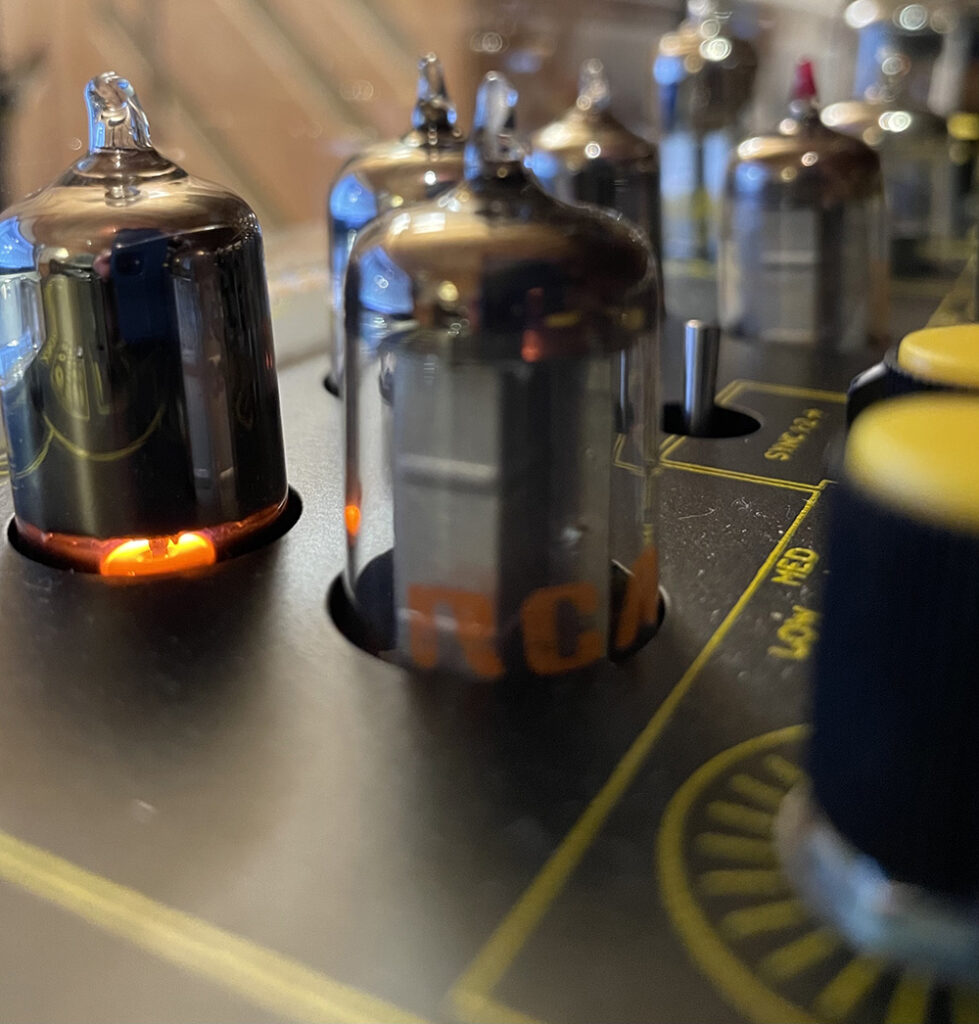
06. Miguel Frasconi: Filament I (9April21) (15:18)
07. Miguel Frasconi: Filament II (9April21) (05:35)
Miguel Frasconi is a composer and improviser who has created through-composed operas, ensemble music, scores for modern dance, and also performs concerts of improvised music, both solo and ensemble.
Miguel specializes in 20th and 21st century repertoire music, and has been playing experimental glass instruments for over 45 years. He also plays keyboards, but these days in addition to composing, likes to improvise on modular analog electronics, most often controlled in other ways than using a keyboard.
I first heard of Metasonix when I read a review of the TX-1 Hellfire Modulator in the November 2000 issue of Electronic Musician magazine (written by Gino Robair). Its architecture sounded totally unique and the idea of tube modulation intrigued me. Around 2003 I picked up a brand new TM-1 SE (special edition with a “low” osc setting). I did put some analog synths through it, but what I really liked were the sounds it made on its own, via self-modulation. I loved the sounds of the raw tubes. The SE version has a stereo output so one channel can be fed back into the module’s input. My setup back then also involved feeding its output into a Moog ring modulator and a EH mini-pog octave multiplier. I would occasionally pipe an omnichord through it, as can be heard in this duet with Joker Nies, https://youtu.be/pkY4eT5Tk8s , or this duet with Lukas Ligeti, https://youtu.be/dRmxaTbt0_s . The setup for the present recordings involve the one self-oscillating TM going through a BugBrand LPG, Cross-Over Filter, PTDelay, and Spring Tanker, with cv modulation from a Buchla 266e and 281h. Aside from the occasional self oscillating filter, the Metasonix TM-1 SE is the only sound source.
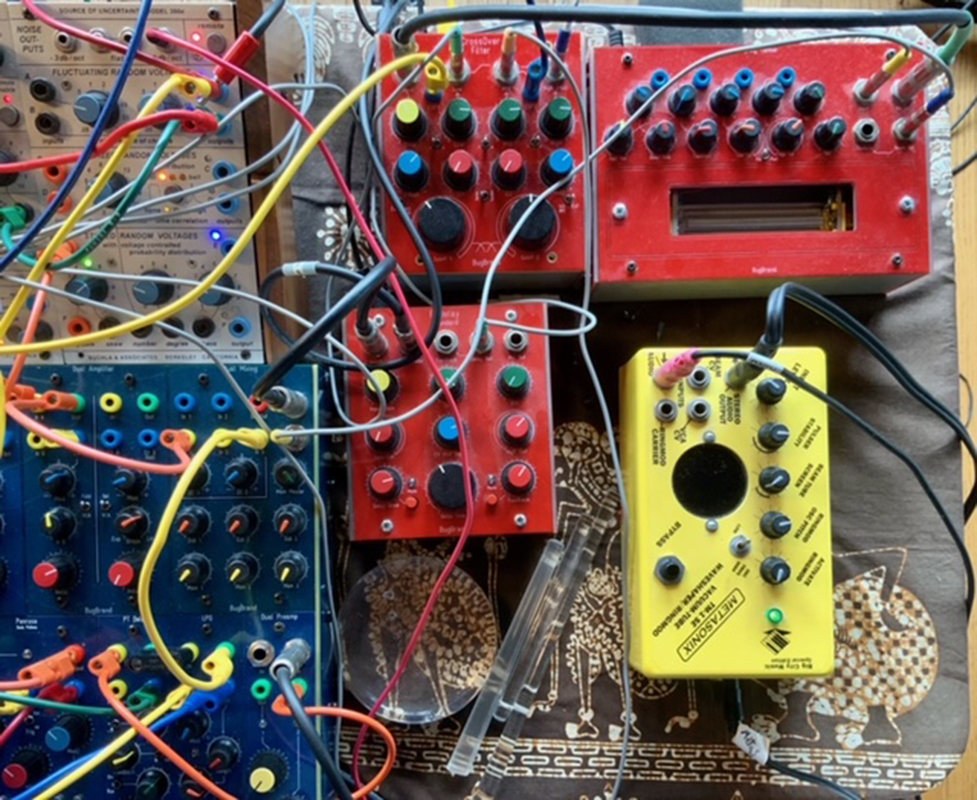
08. Thomas Dimuzio-The Ossification Station (11:36)
Instrumentation:
Metasonix: The Wretch Machine, Scrotum Smasher TM7 (Stereo Edition), Triple Sublime Asseater RK 2/3/4, R-52 Vacuum Tube Multimode Filter, R-53 Vacuum Tube Waveshaper Ring Mod, R-54 Supermodule VCO/VCF
Buchla 200 & 200e
Sherman Filterbank
Arturia Keystep Pro
Eurorack
Thomas Dimuzio is a musician, composer, improviser, sound designer, mastering engineer, and music technologist residing in San Francisco, California. His recordings have been released internationally by ReR Megacorp, Asphodel, RRRecords, No Fun Productions, Drone Records, Odd Size, Monotype Records and other independent labels. Among his collaborators are Chris Cutler, Dan Burke, Alan Courtis, Fred Frith, ISIS, Matmos, Wobbly and Negativland.
Back in the early aughts I came home to a strange message on the answering machine (remember those?). It was Steve from RobotspeaK gleefully informing me that my new Scrotum Smasher had been delivered. That decorative yellow box made a fine addition to my live sampling rig with its hairy sonics and coarse textures. There was no mistaking the glass of the tubes when flicking those toggles. Years later, and while trying to sort out my mod-life crisis, I contacted Metasonix directly and ordered the S-1000 Wretch Machine along with the R modules for Eurorack. Tube awesomeness prevailed. Eric even modded the Wretch Machine with a couple switches to turn it into a stand-alone drone monster. Fast-forward to a few months ago when I finally made the move on a Triple Sublime Asseater. Of all of the modules this one has made the most impact. Its visceral and tactile sonics are just beyond what I could have ever imagined and it integrates perfectly as part of the Buchla ecosystem. Sonic symphonies abound and the slightest touch of a knob offers endless variation and inspiration. This sounds like an ad and a testimonial, and it certainly is!! What this brings to my system is unspeakable. Metasonix! Because my music still sucks!!
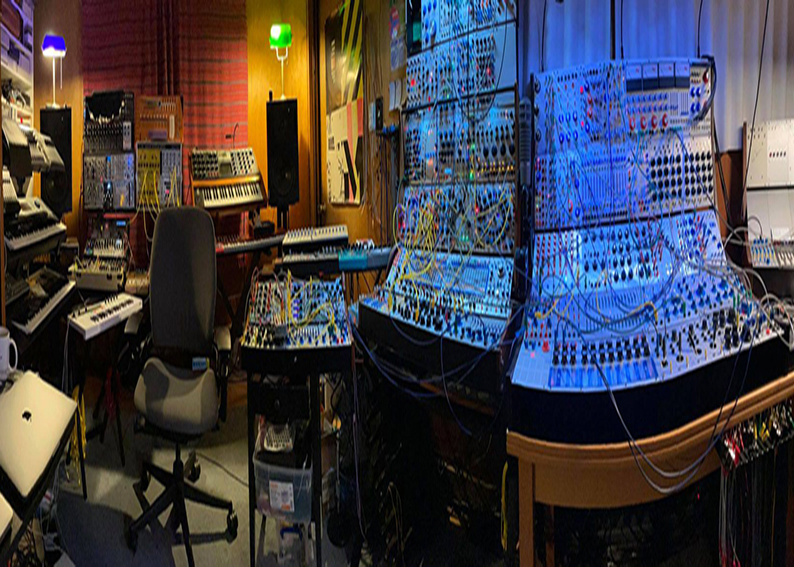
09. C.FA_PP – NOV 2020 (07:19)
C_FA.PP is Fa Cesario (right) and Philippe Petit (left).
We live in the same city and arrange improvising once every few months… This recording took place in late November and lasted about 45 minutes…
I selected, mixed and produced that concrete piece recomposing a souvenir. Hope that you may enjoy the taste of our Madeleine de Proust.
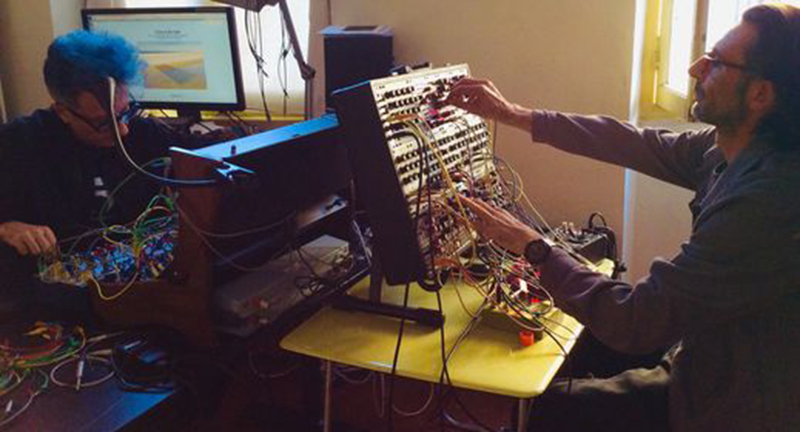
10. PRFRK – Mundus Subterraneus (03:45)
Geek and passionate about all musics PRFRK (aka Yan Proefrock) likes to think outside the box. Video director and editor specialised on live music shows for the french television he learned classical piano quite young and started buying gear in the 80’s. He discovered modular synthesiser in 2016 and became totally addicted to it…
In 2020 he started the very first radio devoted to the genre: Modular Station.
I really like using Metasonic tube modules such as filters or VCA as audio processing with a Eurorack, Serge or Buchla system to give them extra warmth and harmonic distortion. But this time, for these 2 tracks, I decided to use them as a sound source by using sweet resonance spots from the Metasonic RK6 tube filter, to make it sing or rather converse with the Easel, like a plaintive animal. If the variations in timbre and modulations are quite limited, its sound register is quite pleasant because it is very organic, easily inspiring sound storytelling.
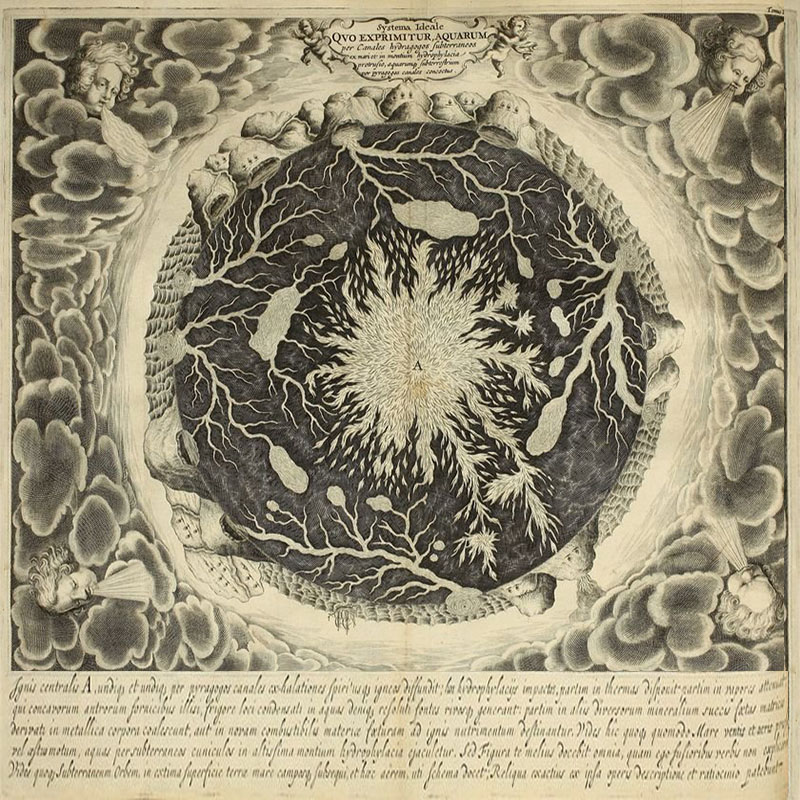
11. Anthony Capelli – Kodiak (09:21)
Anthony Capelli is a composer, drummer, sound engineer and electronic tech.
Builder enthusiast of electronic musical instruments, he plays in the French bands FAT32 & Chevignon and has produced some plays for Radio programs, theatres, short-movies.
For this track I’ve used TM1/TM6/R54/D-1000, e64 sampler, custom made pedals and sound designs.
I like to look for the liminal zones of the Metasonix instruments,
Eric Barbour thank you!

12. Brian Moran – Yellow for fame (04:39)
Brian Moran Is a Psychiatric RN in NYC. He has been banging away at improvisation in Performance Art, Dance, Theater and Electronic sound since 1982.
“Yellow for Fame” was made with Metasonix R51 R52 R53 R54. I picked this track as it demonstrates what Metasonix does best which is sounding like nothing else in the Eurorack system! Made in 2020 during the Pandemic in NYC live to recording. No overdubs. No digital processing.
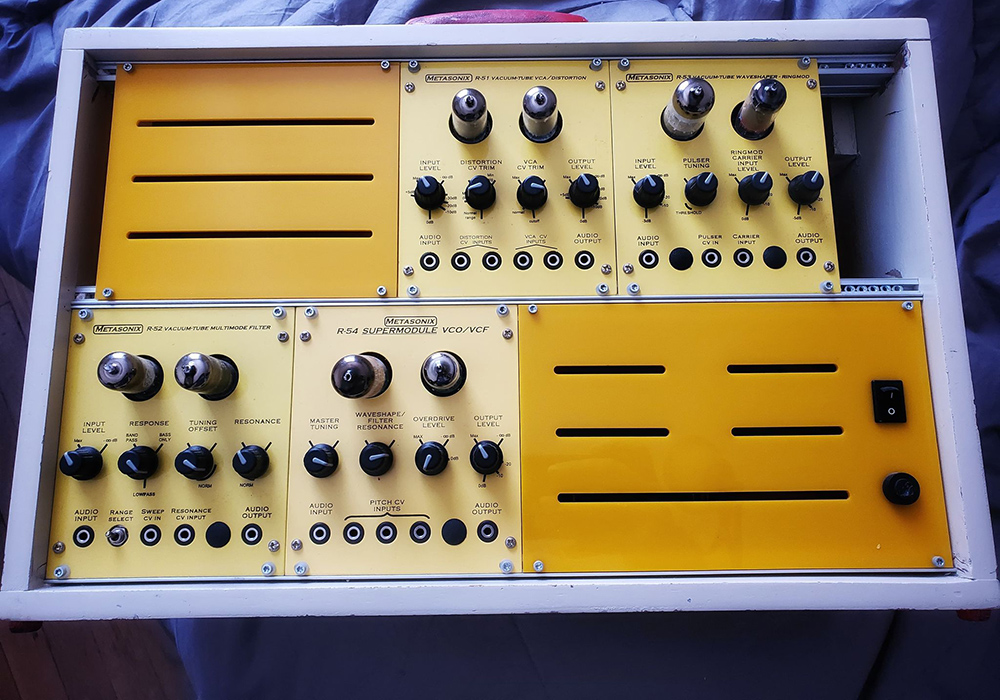
13. Scooter McCrae – Background Noise (20:45)
Scooter McCrae purchased his first synthesizer — a used Roland JX-3P — during his third year of college because he had become obsessed with the music of Klaus Schulze, and over the course of the next 20 years, he accumulated many more keyboard-based synthesizers, including Roland’s Jupiter 6 and 4, a Sequential Circuits Pro-One, and an ARP 2600 semi-modular. At the time he purchased most of these, in the mid-1990’s, they were relatively inexpensive as everyone was discarding them for the new-and-improved digital synths.
In the mid-2000’s, I sold all of my old gear to fund the purchase of my seed Modcan modular set-up, which continues to be my main audio workhorse. I became aware of the Metasonix tube-based gear — their wonderfully hideous yellow pedals and also the Wretch Machine standalone synthesizer. Having grown up inspired by the soundtrack to FORBIDDEN PLANET and aware that many of the sounds created for that score were tubes and circuits being abused and recorded, I was instantly smitten with the idea of adding some tube magic to my sonic arsenal.
Metasonix had a reputation for ugly sounds that were beyond control, but I quickly gathered that it was people who either never used the gear or couldn’t figure out how to use it properly who were complaining. So I took the dive and purchased a Wretch Machine and absolutely loved the sounds it was capable of generating, ranging from ringing ear-ripping nastiness to sublime tubey formant choirs. I have since acquired their Assblaster and four yellow pedals. In combination with the Modcan modular, there are many still uncharted worlds of tonality to explore.
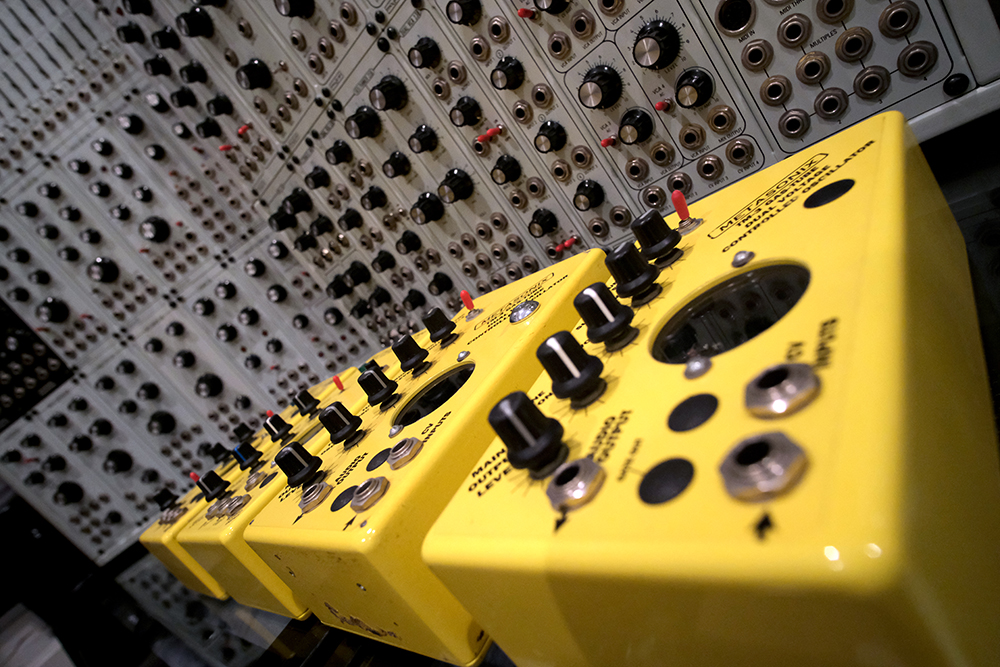
14. Palle Dahlstedt : Thin Line Acouasm (15:25)
Palle Dahlstedt (b.1971) is an artist, composer, improviser and researcher from Stockholm, currently living on an island on the west coast of Sweden. He has studied piano, composition and electronic music (MFA, MA), and has a PhD in evolutionary computation for artistic creativity. His music, ranging from piano solos over orchestral music to interactive software installations, has been performed on six continents, and been awarded several international prizes (e.g., Gaudeamus Prize 2001). In his research, Dahlstedt studies the deep entanglement of art and advanced technology, particularly in relation to creative and aesthetic implications. He develops new technologies for improvisation, composition and art, and is especially interested in advanced algorithms in creative process, in technologies that allow for embodied performance on electronic sounds, and new kinds of interactions, based on a systems view of emergence from human-technology interactions. Through his publications and artistic works, he has contributed both technologies and theories to the field of computational creativity and musical interaction.
Thin Line Acouasm was performed live in one take on a small setup of primary two Metasonix machines, an Eventide long delay and a Bugbrand spring delay. There may have been some old Metasonix TM box involved too, but I’m not sure. The tube machines were an S-1000 Wretch Machine and an S-2000, the former being my very first Metasonix machine, acquired back in 2008. My modular work has primary two strands: Self-playing complex systems and musician-based gesturally controlled playing, where the piece takes shape as an organic improvisation. This piece is an example of the latter. Every sound and parameter change is played by hand in a studio live situation. “Acouasm” is another word for nonverbal auditory hallucination. I do suffer from tinnitus, which is one kind of acouasm. The title was set after the recording was made, and can be considered to be both descriptive and conceptual.
I don’t remember where I heard about Metasonix the first time, probably in some magazine. In 2006 I tried to order a set of their TM pedal boxes (1,2,3 or 1,3,6) from the then UK dealer (who also sold Buchla), but it didn’t work out. I wanted these to expand my modular system into new territories, as these pedals were really synth modules in disguise. Finally, in 2008, I managed to buy the demo Wretch Machine from Analogue Haven on the other side of the globe, and since then I am hooked. My studio now includes almost every instrument and module Eric Barbour has designed, except the early rack units – in total more than a 100 tubes’ worth of crazy Barbour-circuits.
This is not just a collection, but an active part of my everyday music-making. I have bananafied most of my tube modules to integrate them with my Bugbrand modular (a perfect match of two worlds), and I use the TM and TX boxes in all kinds of configurations in studio recordings, feedback experiments, and live improvisation. The larger Metasonix synths and drum machines are essential sound sources for me, and they behave like no others. I have always seen their quirks and instabilities as challenges, and they’ve even made me develop new control mechanisms to find ways to play them. I’ve also made adaptions of technologies from my research to be able to better navigate the sometimes chaotic parameter spaces of these mesmerizing tube circuits.
Eric Barbour has clearly shown the world that there are hundreds of different ways to mess up sounds with tubes, but in spite of the notorius aggressive and distorted sounds of Metasonix machines, I often prefer to seek their more subtle and eire sounds, and they can indeed sound quite sad and lonely, too. I like that.
